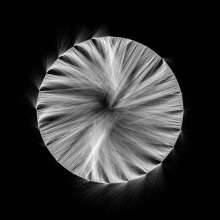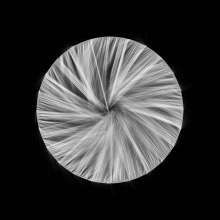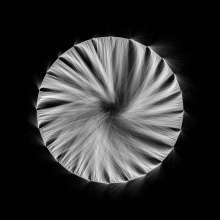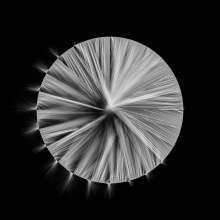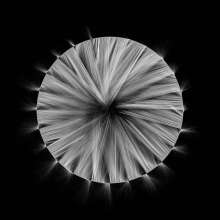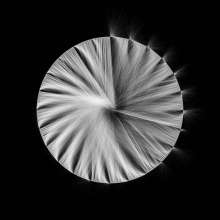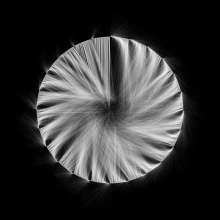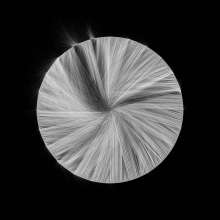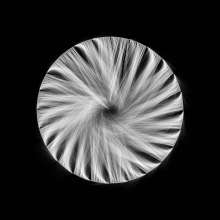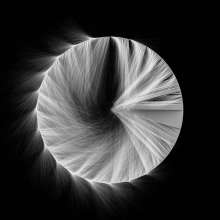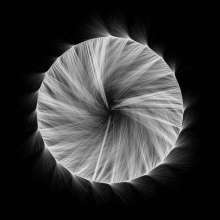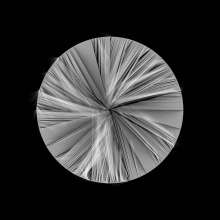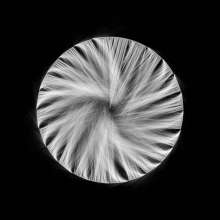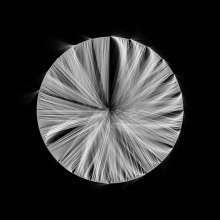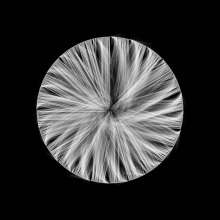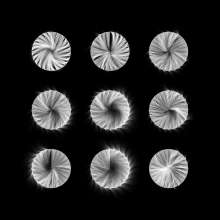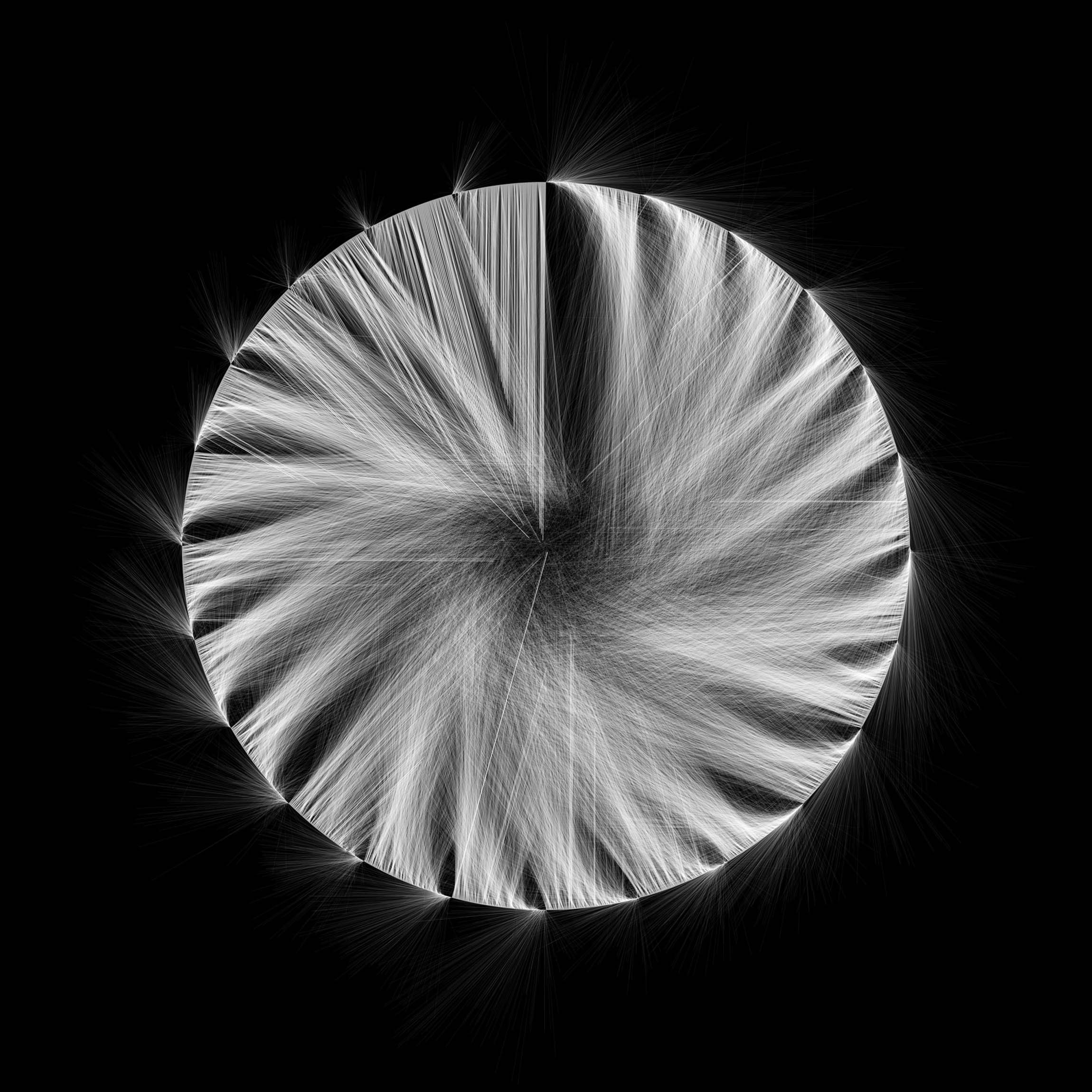
Winds.Process.2015.02
Time is the main organizing principle with this wind drawing process. Using data collected every second for an entire day, a line is drawn for each second of the day from the outer edge of the circle to a point determined by time and wind conditions.
Structurally, each drawing has 86,400 radiuses –– one assigned to every second. The first second’s radius is from the center to the top (twelve o’clock position), each successive radius is placed 0.002778 (360 divided by 86,400) degrees clockwise. The end of these radiuses become the endpoints for the lines seen in the drawings.
A secondary structure is based on radiuses assigned to each hour with their degrees of rotation relating to time. Think of the circle like a clock with 24 hours instead of 12. Sixty points are located along each of these hourly radiuses at regular intervals from the outside edge to the center.
The drawing process starts at the twelve o’clock position where the endpoint of a line is located at the end of the first second’s radius. The process for determining the location for the other endpoint starts with the hourly radius for that second. Each minute of that hour is assigned a point of origin along the radius. The first minute’s point of origin is at the radius’ end. Each successive minute is closer to the drawing’s center, moving in regularly spaced intervals.
From these points of origin, the second endpoint for each line is determined by by wind conditions. For any given second, the endpoint is pushed away from the point of origin as if the wind moved it. The angle is the wind direction for that second (with north pointing toward the drawing’s center) and the distance from the point of origin is determined by that second’s wind speed.
As the wind data is processed, lines are drawn from the endpoints on the outer edge at angles relating to each second’s tick on a 24-hour clock to the other endpoints shifted away from points of origin along the 24 hourly radiuses by each second’s wind conditions.
